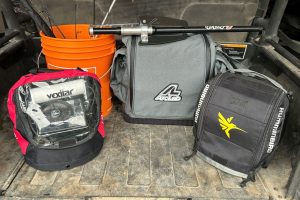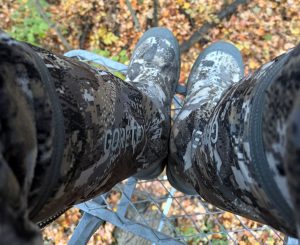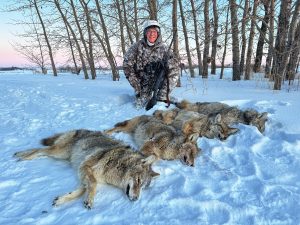
How We Test Gear at North American Outdoorsman
At North American Outdoorsman, our mission is simple: deliver honest, experience-driven gear evaluations from real hunters, anglers, and outdoorsmen who live the lifestyle every day. Modern outdoor content is saturated with sponsored opinions, cookie-cutter reviews, and rankings written by people who never spent a minute with the products they recommend. We built our review process to be the exact opposite.
Our readers deserve real-world experience. They deserve reviews written by outdoorsmen and women who actually take gear into the field, put it through extended testing, and form independent opinions—without influence from sponsors or advertisers. That’s the foundation of our testing philosophy, and it guides every review that appears on this site.
Below is an inside look at how our gear testing works, why our writers sometimes disagree (and why that’s a good thing), and how we make sure our rankings evolve as the industry evolves. This is the process that keeps North American Outdoorsman trusted, transparent, and reader-first.
Independent Testers. Independent Opinions.
One of the core principles of our process is that we do not tell our writers what to say. Every tester is a freelance contributor—a seasoned hunter, angler, or outdoorsman with their own background, preferences, and field experience. We choose freelancers on purpose, because that structure prevents the editorial conflicts that happen when full-time writers feel pressure to align with sponsors, internal marketing goals, or previous “house opinions.”
Because every tester operates independently, it’s entirely possible—and welcomed—that two writers may have different opinions about the same piece of gear. Outdoor gear is personal. What works flawlessly for one whitetail hunter in the Midwest might not be ideal for an elk hunter in steep Western country. A pair of boots that fits one tester perfectly might cause hot spots for another. A crossbow one author loves for speed and compactness might be criticized by another for being loud or hard to cock.
We don’t hide these differences. We highlight them. Honest disagreement shows readers real-world nuance, and it prevents our reviews from sounding like generic, one-size-fits-all recommendations. The outdoors isn’t uniform—neither is our testing.
Why We Use Freelancers Instead of Staff Writers
Using freelance experts gives us several advantages:
- No editorial pressure from advertisers.
Freelancers don’t rely on long-term salaries tied to sponsor relationships. That means they don’t soften criticism to protect an advertising partner. - Broader range of experience.
Our contributors live across the U.S. and Canada. Some specialize in bowhunting, others in long-range shooting, others in waterfowl, predator hunting, ice fishing, or Western big-game. Their unique backgrounds make our testing better. - More authentic opinions.
When you read a review on North American Outdoorsman, you’re reading the writer’s personal experience—not a house-edited position engineered to please everyone.
This is how we protect editorial integrity. It’s how we keep reviews honest.
Where the Gear Comes From
To ensure fairness and transparency, we use a hybrid model for sourcing gear:
- Gear We Purchase Ourselves
We buy gear at retail price whenever feasible. This removes any possible obligation to a company and mirrors the exact experience a consumer would have. When we buy gear ourselves, we disclose it.
- Gear Sent in by Manufacturers
Outdoor companies also send products for testing—this is standard throughout the industry—but sending a product never guarantees:
- coverage in an article
- a positive review
- an award in a roundup
- exposure in a video or social media post
If a product underperforms or doesn’t make sense for a category, we say so. Brands don’t get veto power, editing input, or influence over rankings. Many companies appreciate this level of honesty because it enhances the credibility of genuine praise.
Side-by-Side Comparisons
One of the most important components of our testing process is comparative evaluation. The best way to understand how a piece of gear performs is to test it against its peers in the same conditions. That’s why our testers often evaluate gear in groups:
- Crossbows vs. crossbows in the same speed class
- Boots vs. boots across different terrains
- Binoculars vs. binoculars under identical lighting
- Ice-fishing electronics on the same lakes and ice conditions
- Knives, broadheads, rifles, and apparel in real field scenarios
Comparing items side-by-side reveals differences that isolated testing never would. It’s these subtle distinctions—trigger feel, optical clarity, noise levels, thermal performance, waterproofing, battery life, and packability—that separate a good product from a great one.
Extended Field Use: The Core of Our Testing
We believe gear shouldn’t be judged after a single outing. That’s why our writers take products into the field for weeks or months, depending on the category.
We perform:
Real hunts
In rain, snow, humidity, steep terrain, extreme cold, early-season heat, deep timber, crop fields, treestands, duck blinds, and open prairies. Gear gets used the way our readers actually use it.
Repeated stress cycles
Zippers, buckles, scopes, firing mechanisms, reel drags, rods, boots, layering systems, and pack frames get used repeatedly under conditions that expose weaknesses.
Environmental challenges
We test in dirt, dust, ice, mud, water, temperature shifts, heavy pack weight, prolonged exposure, and real carry conditions. You can’t fast-forward experience—but you can put gear in environments that reveal long-term durability.
Performance after wear
A lot of gear feels great out of the box. We focus on how it performs after being used, sweated in, rained on, dragged through brush, or exposed to freezing temperatures.
This is how we determine winners. Not by reading spec sheets—but by living with the gear.






